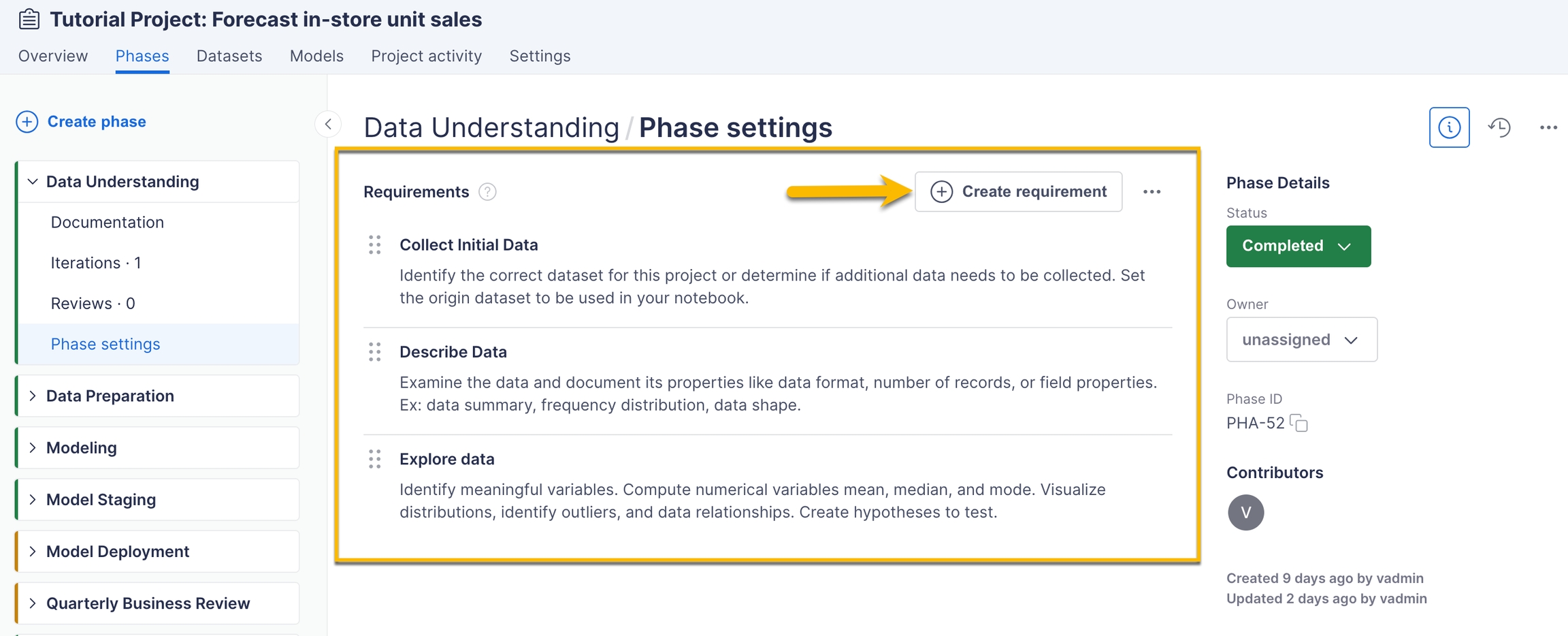Define phase requirements
What are requirements?
Requirements are specific objectives that need to be met to complete a project phase. They act as clear, actionable goals for your team.
Why define requirements?
Clarity: Provides team members with a clear understanding of expectations.
Focus: Helps teams concentrate on essential goals, boosting efficiency.
Progress Tracking: Allows for monitoring of achievements against set objectives.
Create requirements
To create requirements, select  and enter the name and description.
and enter the name and description.
Best Practice:
Be concise and clear in your descriptions.
Make these requirements specific, measurable, achievable, relevant, and time-bound (SMART).
Clearly communicate these requirements to your team. Ensure everyone understands what is expected and why it's important.

Use requirements to structure future iterations
The 'Use requirements to structure future iterations' setting allows you to use those requirements as a way to structure your iteration work in your notebook.
It is an advanced feature, so to learn more about iterations and sections, view our Iterations introduction guide.
How to enable this setting
Go to the requirements settings by clicking the
 .
. Enable the "Use requirements to structure future iterations" option.
